Psalm 69 - Parker and Rankin
(Too long for email…click through for the full post)
There’s a tradition in the Cincinnati area to “pray the steps” on Good Friday, the traditional day Christians remember the trial and death of Jesus. My wife and I didn’t pray those steps but instead went to pray another set of steps in Ripley, Ohio. More than just praying the steps we remembered the story of two men in the early 1800s and their incredible boldness and courage as part of the Underground Railroad. They helpied lead over 2,000 enslaved people toward freedom. John Parker and John Rankin are not household names but their courage is something to be remembered and part of our prayer was that we would live with that same boldness and courage today. The steps we prayed were well over 300 railroad tie, stone, and wooden steps that go from the base of Liberty Hill in Ripley, Ohio to what is known today as the Rankin House at the top.
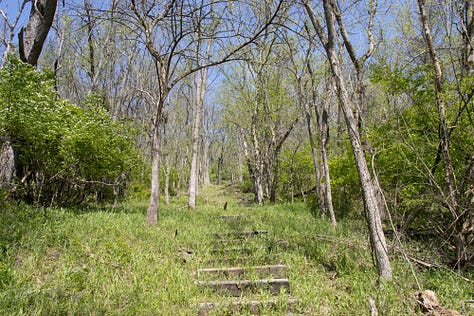
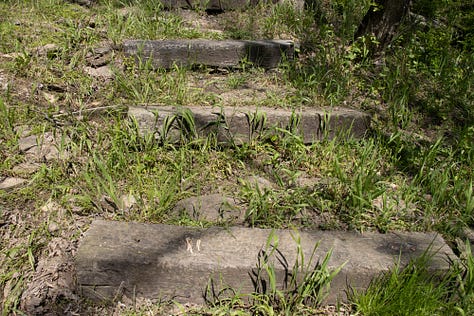
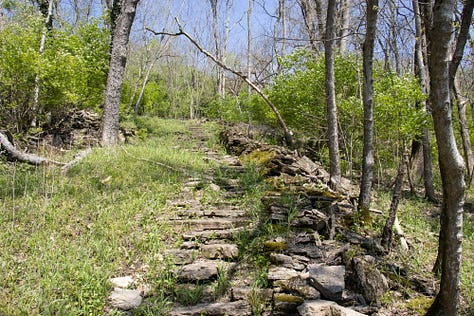
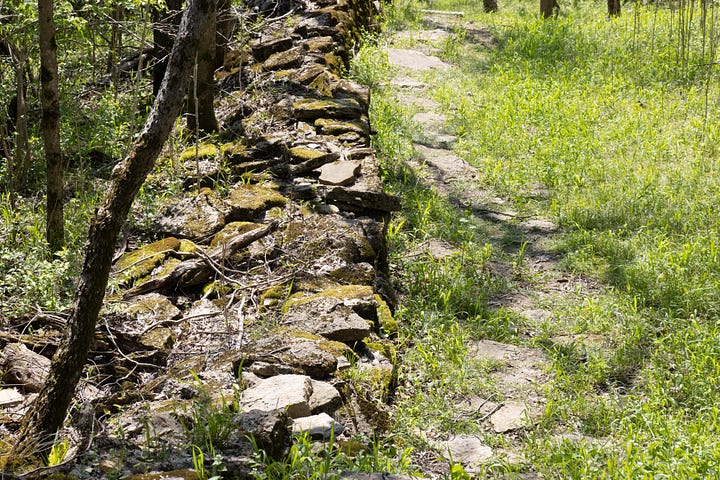
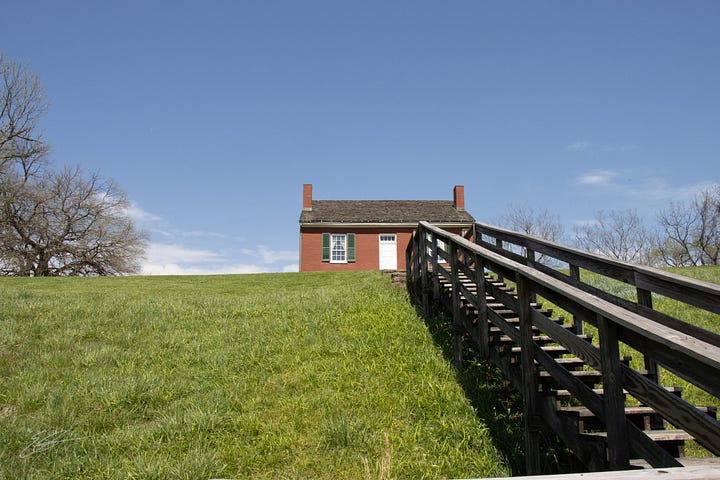
There is much more than these steps to this story and I heard much of this story that we prayed in the lengthy lament that we find in Psalm 69.
The Psalm begins in this way with verses 1-3
Save me, O God,
for the waters have come up to my neck.
I sink in deep mire,
where there is no foothold;
I have come into deep waters,
and the flood sweeps over me.
I am weary with my crying;
my throat is parched.
My eyes grow dim
with waiting for my God.
One place right along the Ohio River is marked with this sign about a woman whose story inspired Eliza’s tale in Uncle Tom’s Cabin.
This was an enslaved woman from Dover, Kentucky just across the river. She fled when she learned that her enslaver was planning to potentially sell her 2-year old child. Here’s what Ann Haggedorn wrote about her story in her book Beyond the River:
She followed the path and plunged down the bank just as the dogs broke from the woods nearby. With panic as her only guide… she stepped upon a patch of rotten ice several feet into the river and quickly stumbled into the icy water. Holding a fence rail in one hand and her child in the other, she moved forward until she hit upon the ice, which for several feet grew firmer as she walked. The dogs and the men were searching the banks for her, still unaware that she was daring them to cross the river. She moved quickly and silently. Then the ice broke through with a loud popping sound. As she fell into the now-deep waters, she threw the child onto the ice ahead and used the rail for support. Working her way to the firm ice again she found her baby still partially wrapped in the blanket.. now wet with the soft slush of melting ice. Running across the ice… she sensed that the other side was near, but it never seemed to come. A third time she fell and, saved by the rail, climbed back out. So cold and exhausted was she now that she let go of the rail that three times had saved her.Haggedorn p.136-1371
Continuing in the Psalm...verse 4
More in number than the hairs of my head
are those who hate me without cause;
many are those who would destroy me,
my enemies who accuse me falsely.
The Underground Railroad was about setting people free who should never have been captive in the first place. This verse from the Psalm speaks to how people dehumanized those they considered “property” and abused them in horrific ways. These alleys and roads led directly from the Ohio River near John Parker’s house up to the base of Liberty Hill which would be another step toward freedom.
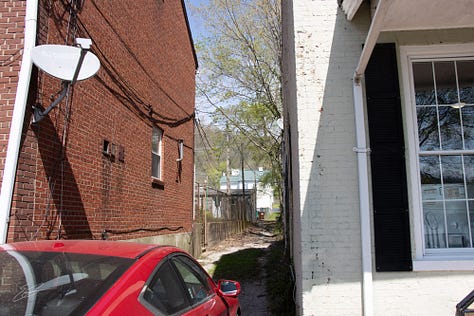
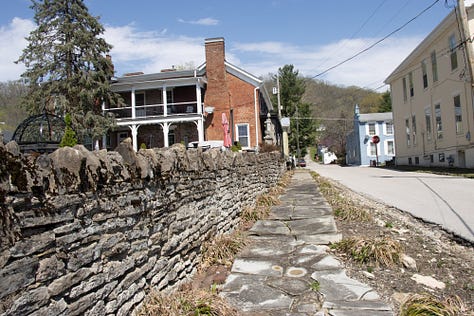
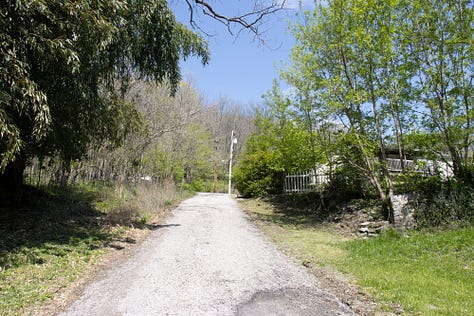
But it wasn’t just Parker and Rankin helping these freedom seekers. There were people up and down this street who would help shelter people who were being pursued by bounty hunters. Many of the residents of the town would also provide food to the escaping people in some unique and creative ways. I can only imagine how it would have felt for someone who had been dehumanized for so long to be treated in loving and compassionate ways as they made their way toward freedom.
Moving to veres 6-8:
Do not let those who hope in you be put to shame because of me,
O Lord GOD of hosts;
do not let those who seek you be dishonored because of me,
O God of Israel.
It is for your sake that I have borne reproach,
that shame has covered my face.
I have become a stranger to my kindred,
an alien to my mother’s children.
Parker, as a man who had bought his own freedom and became an entrepreneur on his own in RIpley, Ohio (read the wikipedia article I linked above) and Rankin (a Presbyterian minister) both faced the scorn and hatred of others because of their couragous actions. They put not only their own lives on the line but the lives of their families as well. All of them together “bore reproach” and faced shame.(and far more) but they couragously continued the work, at true risk of their lives. Haggedorn shares this story about one such incident.
In one incident along the Ohio River near Ripley, a Presbyterian minister [John Rankin] from Ohio was travelling downriver on a steamboat on which there were numerous slaves going south to be sold. The minister spoke to the slaves and told them that they were as free in God’s eyes as any other men. Other white men oh the boat, who saw what the minister was doing, ordered the captain to land the boat on the Kentucky shore. At first he refused, but they persisted, threatening violence. As he landed the boat, the men tied a rope around the neck of the preacher, which they ten threw over the limb of a tree near the boat. Just as they were about to hoist the preacher off his feet and to his fate, his wife fainted at the feet of one of the men. This sight moved one of the witnesses from the boat to step forward and to tell the men, in reportedly eloquent terms, how wrong their tactics were and how righteous the minister had been in trying to help the slaves. The men stopped, and one said, “He must be thankful he was on Kentucky soil, for if he had been on the soil of some of the other States, eloquence would have availed him nothing in that crisis.” Later, a slaveholding owner of two Mississippi plantations wrote a letter to the editor of a Kentucky newspaper which had reported the passenger’s heroic intervention: “If you should be caught in any part of the South and the declarations you made should be proved against you, YOU WOULD BE HANGED WITHOUT JUDGE OR JURY, to the disgrace of your family.”2
Day after day, escapee after escapee, they did the work. Here is John Parker’s house, which is right along the Ohio River followed by John Rankin’s, which is at the top of the hill overlooking the Ohio River valley.
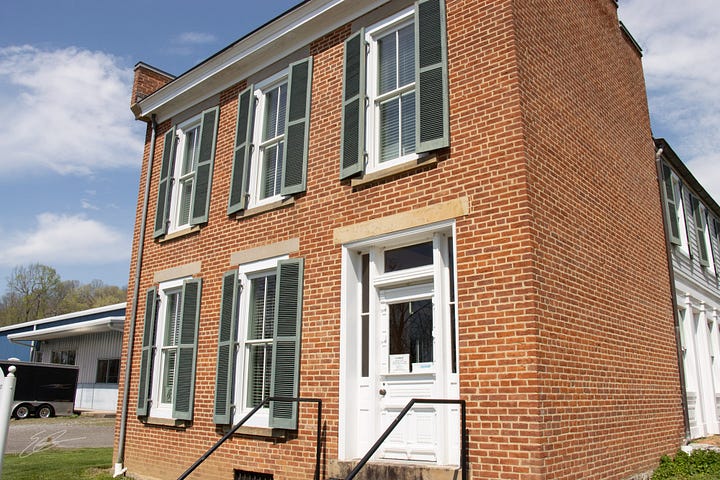
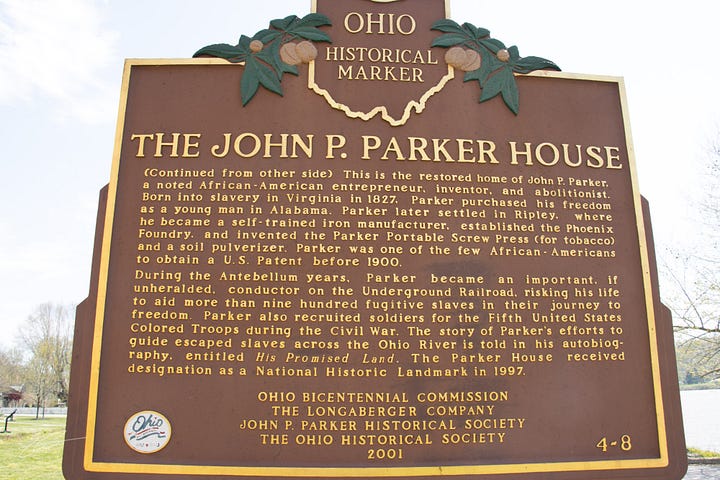
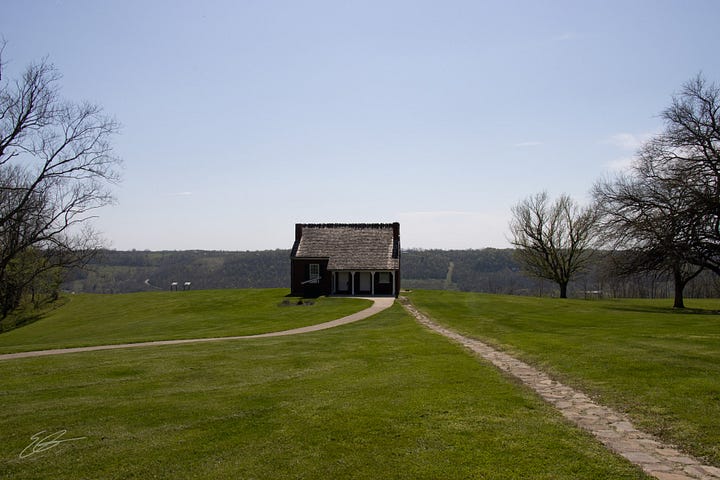
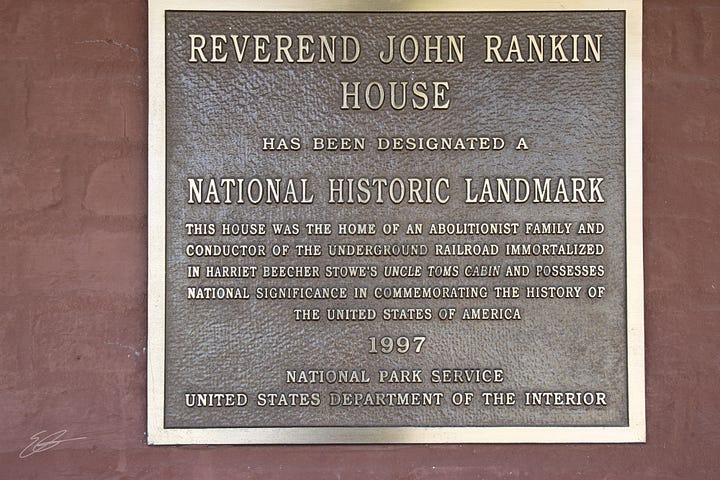
Verse 9 begins with this:
It is zeal for your house that has consumed me;
Both of these men (and those helping) did this work day in and day out. It wasn’t just something that was scheduled or on a fixed routine. Instead, it was whenever someone came across the river and needed to be conducted along toward the other stops on the railroad. Rankin’s house provided a clear view across the river where he could see lights to signal that someone was coming and it provided a view for him of those coming up towards his home (both friend and foe alike)
When an escaped person would come to the Rankin home, they would be given food, clothing, and shoes and then helped by a member of the family to the next stopping point on the journey often about 5 miles north to the Red Oak Presbyterian Church, or if there was danger in that direction, there were alternate routes. Many times the conductors were Rankin’s sons who would have to make the 10 mile journey in the middle of the night, return home, and then get up in the morning to do chores and then go to school.
John and Jean Rankin’s daughters were also a part of the work. They helped to sew clothes for those who came needing assistance and they also sewed these dolls to give to children who were escaping as well. Sometimes the heads of these dolls were stuffed with beeswax or dipped in honey to serve as bit of a pacifier to keep the littlest ones quiet on their journey.

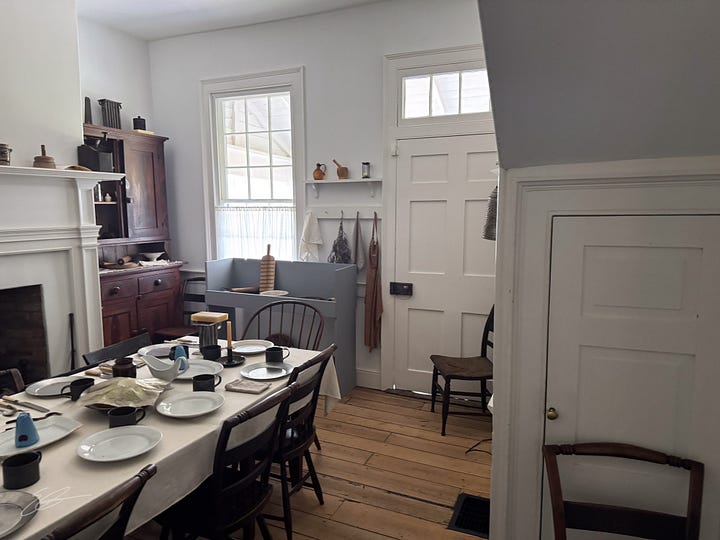
Skipping ahead to verses 16-18:
Answer me, O LORD, for your steadfast love is good;
according to your abundant mercy, turn to me.
Do not hide your face from your servant,
for I am in distress—make haste to answer me.
Draw near to me, redeem me,
set me free because of my enemies.
I imagine that this was a Psalm prayed by Parker and Rankin and their families many times, praying it not only on their own behalf but even more for those they were serving. I am sure that similar words were prayed by those who were escaping and seeking freedom.
On the way up the hill from the town towards the base of the big hill (where the stairs are) we passed the church that John Rankin served as pastor. From the pulpit he called for the emancipation of enslaved people and inspired his congregation to be a part of the work, even as others probably told him that he should stay out of “politics”.
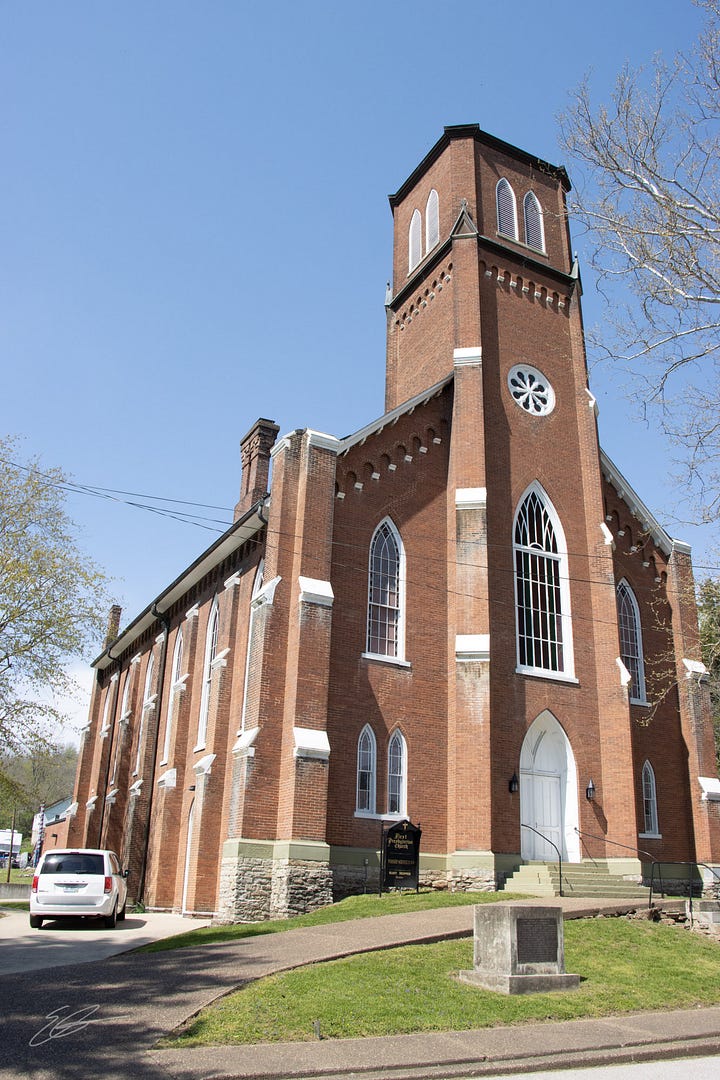
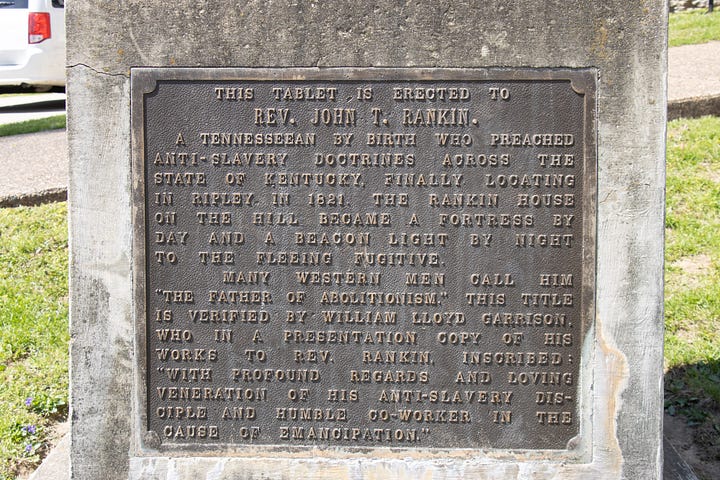
Verses 30-33 ring out with what may have been heard in word, in prayer, in song, and in action from this congregation two hundred years ago:
I will praise the name of God with a song;
I will magnify him with thanksgiving.
This will please the LORD more than an ox
or a bull with horns and hoofs.
Let the oppressed see it and be glad;
you who seek God, let your hearts revive.
For the LORD hears the needy,
and does not despise his own that are in bonds.
Those last two lines especially speak not only to that time but also to today of how Scripture shows that God’s heart is first with those in need, those in bonds, and those who are oppressed. God’s heart at that time was attuned to those who were crossing that river as well as those who had not yet received freedom. And I don’t believe God’s heart has changed since...God is still with those in need, those in bonds, and those who are oppressed.
The Psalm closes with this:
Let heaven and earth praise him,
the seas and everything that moves in them.
For God will save Zion
and rebuild the cities of Judah;
and his servants shall live there and possess it;
the children of his servants shall inherit it,
and those who love his name shall live in it.
I hear in these closing words the dream of a different world than the writer was experiencing. It was a world that the writer of this Psalm dreamed and longed for. It is the world that John Parker, John Rankin, and so many others sought to bring to birth in the work that they did. It is the world that Jesus spoke of time and again. It is that world that is still waiting to be born. We see glimpses of it but for now we aren’t seeing it fully. The work still continues. The courage and boldness of people like Parker and Rankin should inspire us to do the same beacuse people continue to be enslaved, oppressed, dehumanized, and hunted. It was said that this lantern was always lit at night for whoever needed to find the light to freedom.
May we do the same. I want to close with a prayer that my wife wrote for a devotional for this Good Friday experience
All Loving, Jesus Christ,
Your passion and death tore open the fabric of heaven and earth and rent the curtain of separation between the Holy and the profane as all things were reconciled to you. And yet we are still learning how to follow Jesus. We are still learning how to practice his love, and mercy and justice.
May we who have reflected on these mysteries and walked these steps meditating on the paths from bondage to freedom, rededicate ourselves to following in Christ’s steps seeking justice in his name. As we do this may we all experience your loving kindness and mercy on earth as it is in Heaven.
We pray this in the name of the Triune God,
Creator, Redeemer and Sustainer.
Amen.
Grace, Peace, Love, and Joy,
Ed
PS - Scout was with us as well and she did the steps too. The second photo is after she got a little bit of doggie ice cream on the way home.
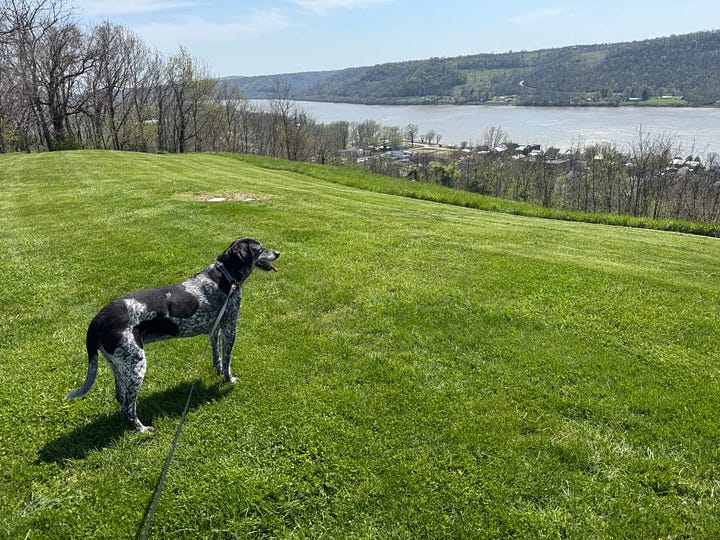
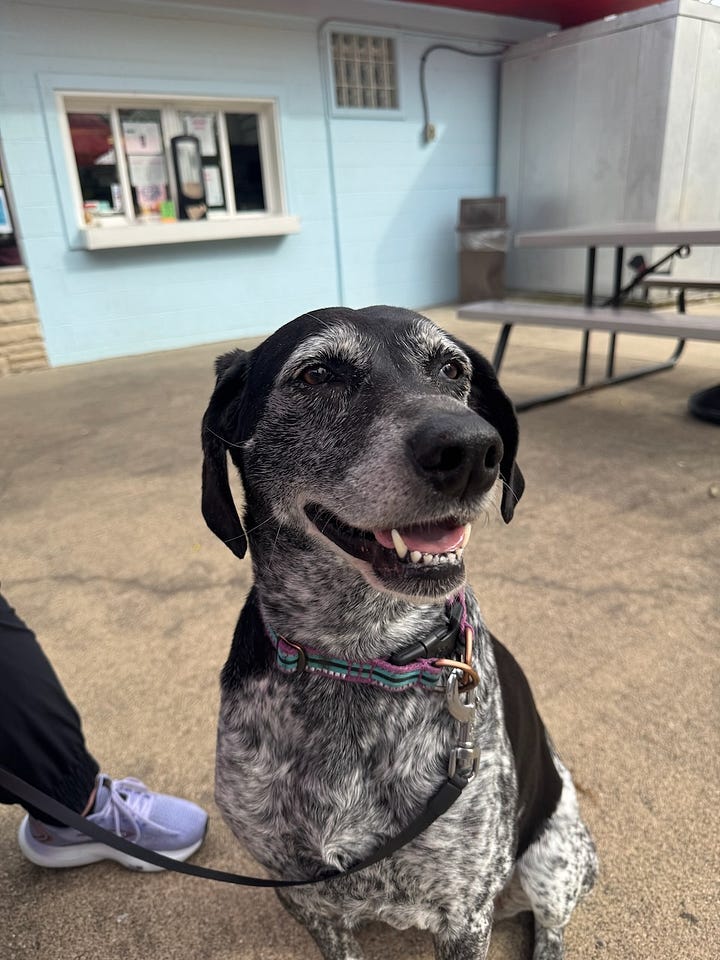
Haggedorn p.136-137
Haggedorn pp. 54-55



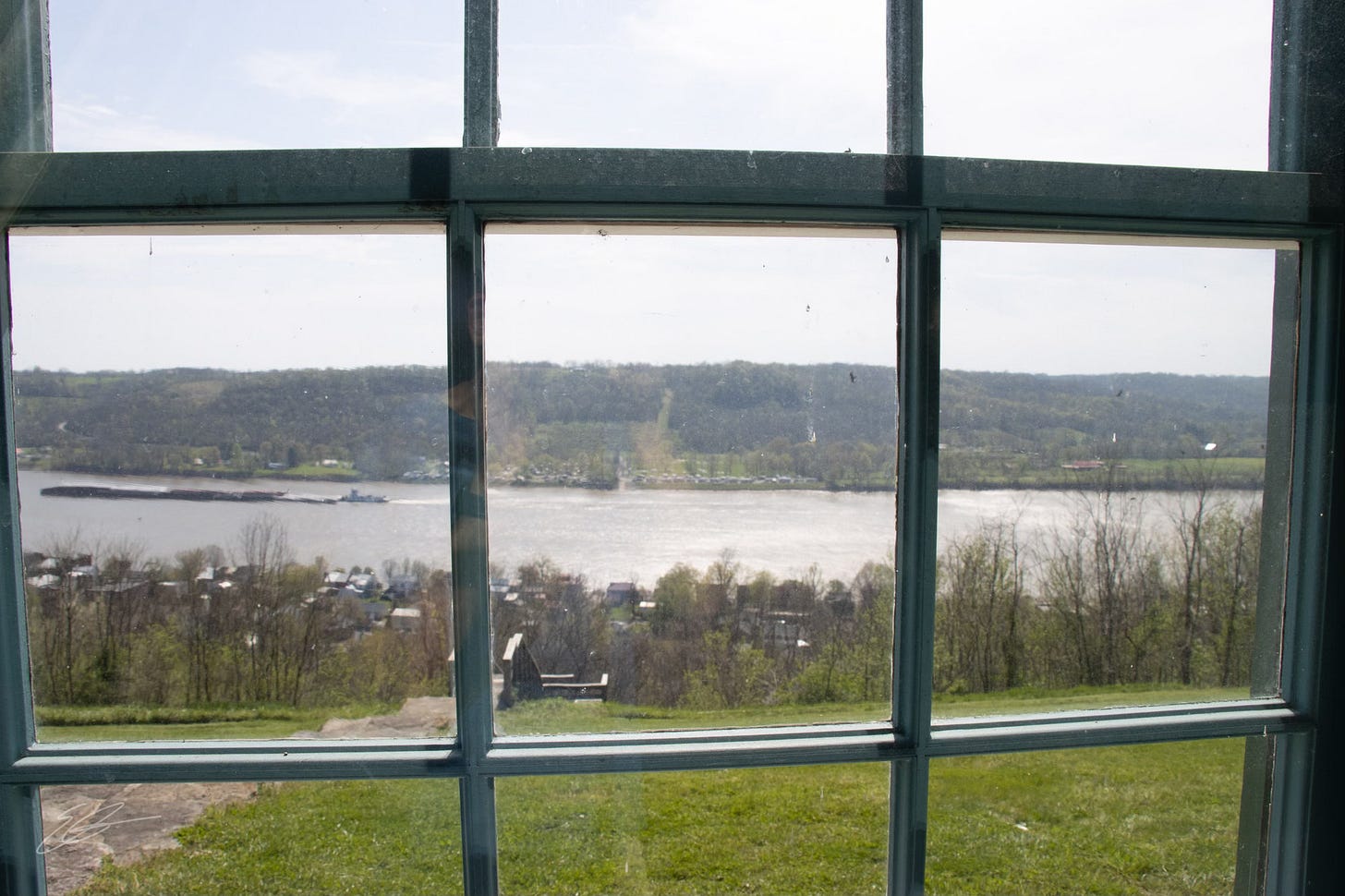
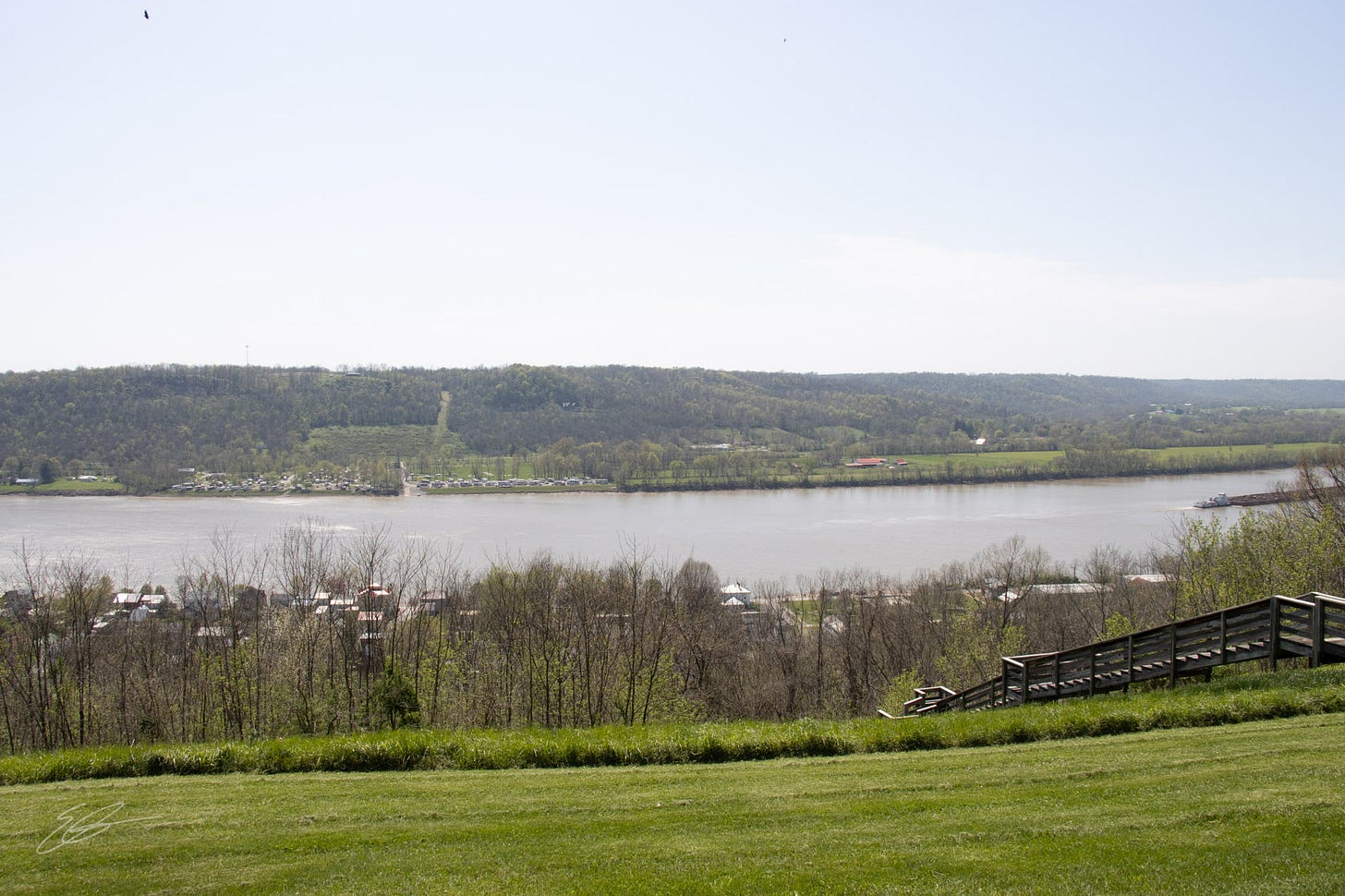
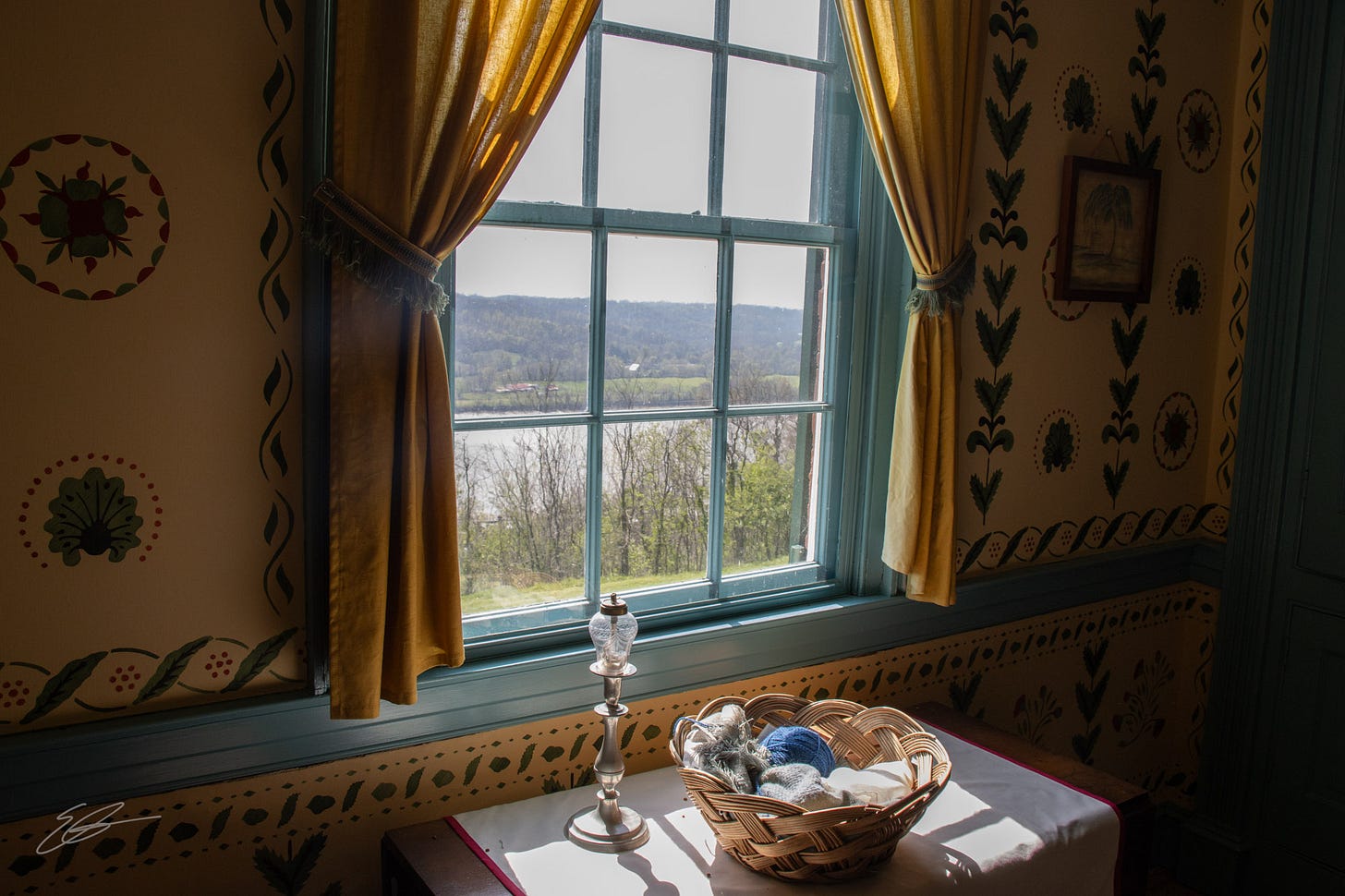
💞 Amen
Definitely an inspiring climb! Thanks for sharing Ed. Wishing you and your family a happy Easter!